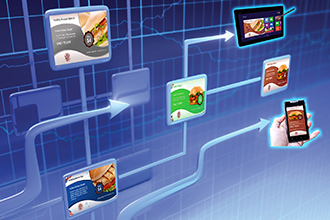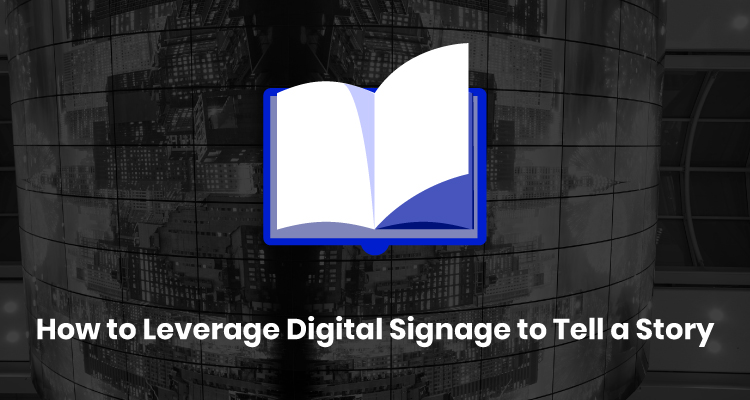Creating Great Content Templates for DOOH/Digital Signage Networks
The focus of this series “Power of Content” is to help people with content strategies and how they relate to digital screen media.
 When considering templates, don’t be tempted to merely copy from one DOOH network to another. Every network has different needs, and the assets available and the type of templates created will be unique.
When considering templates, don’t be tempted to merely copy from one DOOH network to another. Every network has different needs, and the assets available and the type of templates created will be unique.
I have seen it WAY too many times where someone puts a picture over a picture with some text — arrgh! Templates are not just another Power Point message on the screen. They can be sophisticated, elegant and agency level design that runs across the entire network and bleeds off onto other screens like mobile and tablet.
If we are talking about a point-of-sale network (POS) — specifically an in-store network — the content will always have overarching brand messaging that appears along with product offerings. One can create brand elements and templates that will be used throughout the year to drive that brand messaging while leaving central locations for a product offering to appear. One can also create a layer within the brand messages for product offerings that will have their own brand. Creating elements to drive these offers is just one example of a template that can be reused and changed slightly to keep the messaging fresh.
Menu boards are another great example of how templates can be used to change the pricing, pictures, or specials that need to be updated from breakfast to lunch and dinner. For any network, one needs to create a set of templates that are refreshed at least once a quarter. This isn’t an exercise in re-branding the company or building an entirely new visual language for the network, but one should create variance that introduces new elements into the ones that have already enjoyed a three-month run.
For example, create a series of templates that have corporate branding elements for a specific purpose. You may have a series of compliance messages that you need to get out, so create a template that is designed for that type of message. The viewer will learn that when that particular template is up, the content pertains to workplace compliance. Creating templates with branding elements for other types of messages will also play well with viewers. If you use the same template for everything, the viewer will get tired of the same look all the time.
At Adspace, for example, they create templates for POS networks that allow weekly content changes and a complete shift with each retail season. They have a spring set of templates, a summer set of templates, a fall set of templates, and so on. Then within those templates they have different creative for holidays. In addition, they are following the customer: ‘What is Mom thinking for back to school or the holidays?'”
Also consider a series of community messages and good old eye candy that can give retail employees a reprieve in the daily grind. Give them something to smile about, too.
There are many methods to generate viewer interest on an internal communications network, and the digital signage communication offers power. It is also important that the templates create an overall look for the entire network — something that gives graphic consistency across all screens. This is where we can take a lesson from the second screen. TV stations create that kind of identity so that even catching a brief glimpse of local programming or a promo spot will visually tell viewers they are watching Channel 5. Network owned and operated stations take that a step further; one can tell they are part of a particular network by the consistent visual cues like type style, screen layout and even the shape of the station’s logo. Not only do digital signage networks benefit from this kind of continuity; the fact is that after many years of TV exposure, the viewer expects, even subconsciously, that certain standards of appearance and identity will be met.
Within Target TV you know you are watching Target TV because a nice chunk of content playing is advertising an event or sale that is Target and Target’s ID plays a huge role in establishing the network look and feel. The station ID or brand is a breath of fresh air. It’s a bright shiny spot and they’re fun. It really starts off to give the channel a Target branding moment. It gives it cool factor. It is designed to surprise and delight their guests. In production they go into a treatment that is part of an existing campaign with specific art. They take those campaign elements and slice them up and add the motion. In addition, Target looks at all of the content that runs across their network. Target does not throw just any content up on the network simply because the vendor wants it there. The Target network is much more of a collaborative affair than a mere purchase of airtime by a vendor.
Next article, I will discuss how many templates does one need and how does one figure it out?
Author and speaker Keith Kelsen, chief visionary at 5th Screen, is considered one of the leading experts on digital media. More information about his book, Unleashing the Power of Digital Signage — Content Strategies for the 5th Screen, published by Focal Press, can be found on the book’s companion website. Reach him via email or on Twitter.





